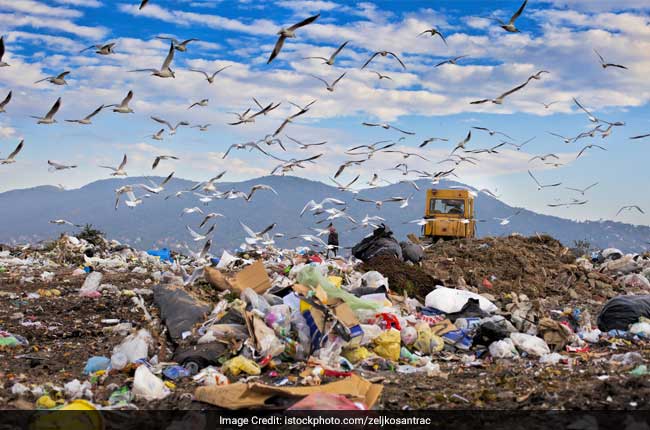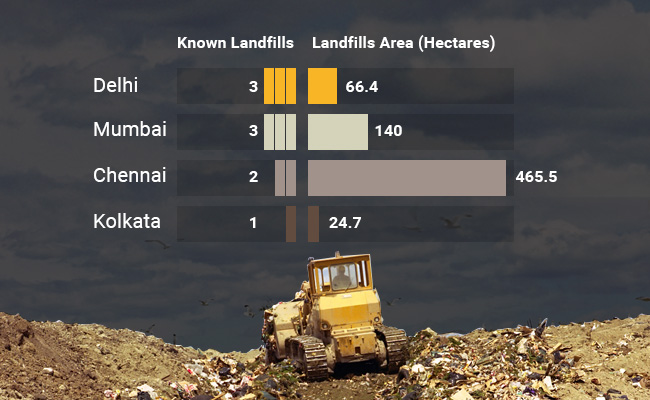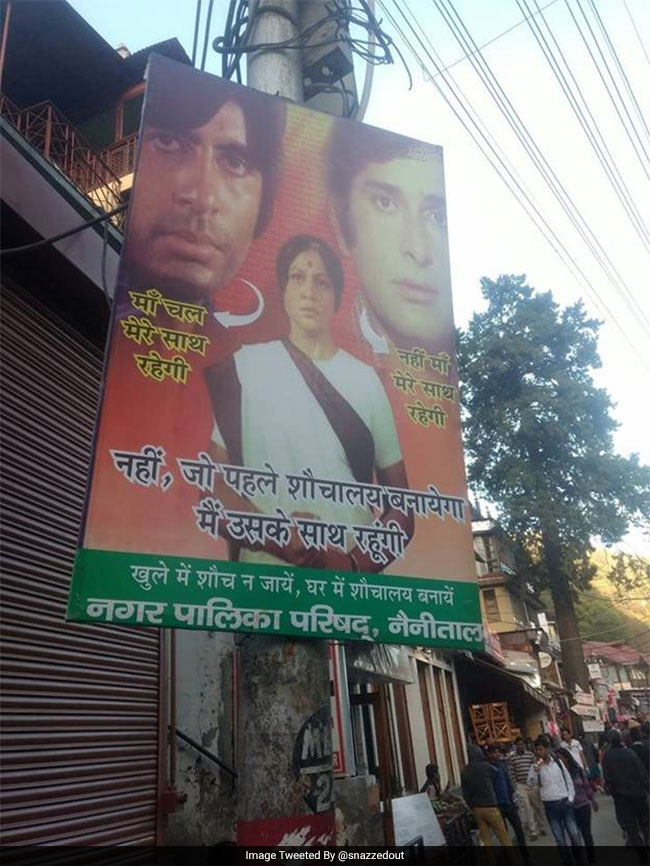It’s almost like a landmark in East Delhi’s Ghazipur area – a 50 feet tall mountain of garbage. This is one of India’s largest landfills and paints a symbolic picture of one of the biggest problems plaguing the country. India is almost drowning in the garbage it generates. From solid urban waste to sewage to chemical or industrial waste – every type of waste is mismanaged and has become a mammoth problem in the face of rapid urbanization.
Also Read: Waste Management: How India Is Drowning In Garbage
India’s Growing Waste Woes
- Waste People Generate | India’s urban population of 429 million citizens produce a whopping 62 million tonnes of garbage every year. Out of this, 5.6 million tonnes is the plastic waste, 0.17 million tonnes is the biomedical waste, 7.90 million tonnes is hazardous waste and 15 lakh tonnes is e-waste. A staggering figure of forty-three million tonnes of Solid Waste is collected annually, out of which only 11.9 million, that is 22-28% is treated, while about 31 million tonnes of waste is left untreated and dumped at the landfill sites.Also Read: Change Begins At Home: 5 Simple Ways To Reduce Waste
- How Major Metros Manage Their Trash | Major metropolitan cities like Delhi, Mumbai, Chennai, Hyderabad, Bengaluru and Kolkata generate about 10 million tonnes of garbage every day. The problem is not the enormous amount of waste generation, but how a huge chunk of garbage is remained untreated every single day. Here’s a look at how the two major cities of India, Mumbai and New Delhi manage their waste:Mumbai: Has only 3 dumping grounds to handle the 9,600 metric tonnes of waste generated daily. The major landfill Deonar in this metro is about 90-year-old and is on the verge of collapsing. The garbage heaps here is as tall as a five- or six-storey building, standing 15 metres high. Another landfill at Mulund has been functional since 1968. It’s spread across 25 hectares and is also way past its use-by date.
New Delhi: The capital city generates around 9,000 metric tonnes of waste every day and is already sitting on a ticking garbage bomb! Delhi has a total of 3 landfills, at Ghazipur, Okhla and Bhalswa.Everybody is familiar with the famous over-saturated Ghazipur landfill site in east Delhi. It is one of the largest landfill of the country and is one of the biggest contributors to the alarming level of air pollution in the region. Spread across 70 acres, this landfill contains approximately 12 million tonnes of waste. Currently, it is as tall as 50 feet. The landfill overshot its limit of 15 feet way back in 2002, but in the absence of an alternative site, the landfill continues to function till date.
Also Read: From Garbage To Garden: Learn The Art Of Composting At Home
- India’s Ever-growing Landfills | India’s landfills are bursting at the seams and overflowing with items that shouldn’t be thrown in the trash. More than 70% of collected urban waste is dumped straight into the landfills. As a result most of them are brimming and are way past their limit.
- The Problem of Untreated Waste | Imagine 3 million trucks piled high with garbage. That’s how much untreated garbage Urban India generates every day. Just in case if you are wondering how much waste that is – If these 3 million trucks are laid end to end, they would cover half the distance between the earth and the moon. That’s also the distance you would cover if you made 15 trips between Mumbai and Los Angeles.
Also Read: 5 Cool Waste Management Ideas From The World That India Can Adopt
- Top Waste Generating Cities In India | Talking about solid waste, according to a Central Pollution Control Board (CPCB) report, Maharashtra tops in solid waste generation by generating over 26,820 tonnes of solid waste per day. In the e-waste sector, Mumbai comes first as it generates an estimated 1,20,000 tonnes of e-waste annually. Delhi and Bengaluru are ranked second and third, with 98,000 and 92,000 tonnes of e-waste generation respectively. The biggest threat to our environment comes from plastic. 60 major cities in India together churn out over 3,500 tonnes of plastic waste every day, with cities like New Delhi, Chennai, Kolkata, Mumbai, Bengaluru, Ahmedabad and Hyderabad being the biggest culprits.
- Prediction |Research shows that if India continues to dump untreated garbage at its current rate, then we will need a landfill of size 66,000 hectares which is 10 metres high and can hold 20 years’ worth of waste. That is almost 90% of Bengaluru’s area.
- Around the word – Where India Stands | Globally, there are around 2,200 waste-to-energy plants, of which the European Union has 445, China has 150 and USA has 86. Despite its burgeoning population, India just has 8.If India starts collecting and treating its waste effectively then it can be used to generate a lot of energy. Did you know that unused waste has the potential to generate 439 MW of power from 32,890 TPD of combustible waste? To put it in perspective, this much energy is enough to meet the power demand of a union territory like Pondicherry.
- India’s Contribution To The World’s Growing Waste Miseries | Researchers say India pumps around 0.6 tonnes of plastic waste into the oceans annually. It is the 12th biggest plastic polluter in the world and ranked 10th when it comes to the generation of municipal solid waste.India also discards around 1.7 million tonnes (Mt) of electronic and electrical equipment annually and is the fifth biggest producer of e-waste in the world.
- Poor Waste Management Turning India’s Cities Into Pollution Bombs | All you need is a small spark from the light of a matchstick or a cigarette stub to turn any dumping waste site into an inferno of hazardous gasses.Apart from overflowing waste, India’s landfills are also home to toxins, leachate and greenhouse gases. With time, toxins produced by waste leaches into the soil and groundwater, and become environmental hazards for years. Another area of concern is the imminent danger of Green House gases. When organic material like food scraps and green waste is put in the landfills, it is generally compacted down and covered. As a result, the oxygen is removed from it which causes it to break down in an anaerobic process. Eventually this releases methane, a greenhouse gas that is 21 times more potent than carbon dioxide.
- Lack Of Awareness And Enforcement | The solid waste management rules of 2016 has made waste segregation mandatory for every waste generator be it an individual, community, society or an corporate office, but implementation remains poor. Another reason for the poor waste management in India is the lack of awareness. Waste generators don’t know what they can do in order to reduce their own carbon footprint. Though composting is an important part of the Swachh Bharat Abhiyan Campaign, the lack of knowledge makes it unsuccessful.

































Archit Chhibber
July 31, 2017 at 12:18 pm
I would like to join the group & make money from the same
Sameer
April 21, 2018 at 5:03 pm
Great views about the solid wastage. This really helped me understand Waste Management Solutions very good and Ajeevi also support this.
aishwarya
February 11, 2019 at 8:43 pm
really need to do something about this